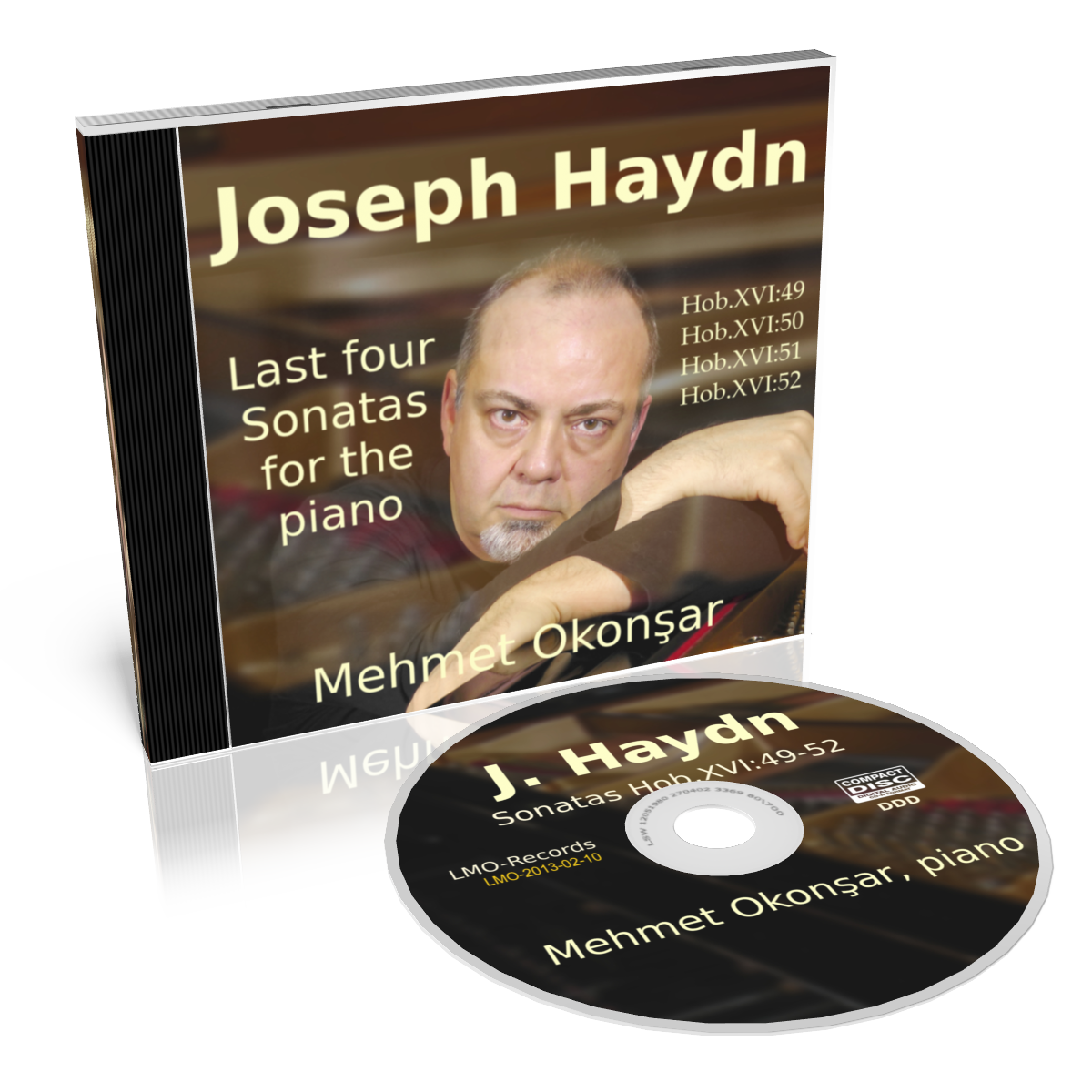
Joseph Haydn (1732-1809)
Last Four Piano Sonatas


|
"Surprise", in the music of Joseph Haydn, is not just the nickname of his G major symphony No. 94 (Hoboken 1/94). The unexpected is everywhere. Bewildering harmonic progressions, astonishing dynamic shifts, stunning rhythmic elaborations. His novelties in instrumentation, widely acknowledged in his symphonies, specially the "London" symphonies, are no less apparent in the piano. The "open pedal" effect which appears twice, by his own terms, in the autograph score of his Sonata in C major Hob.XVI:50, first movement, track 4 of this recording, flagrantly mixes various dissonant harmonies. Here may be an antecedent for a similar effect in his student Beethoven's Sonata No.17, "Tempest" op.31 n.2. Contrast is also carried to the extreme throughout his works. Heterogeneity in all aspect of a music: durations (very) long and short; dynamics (very) strong and soft; pitch ranges (very) high and low. His achievements as a composer but also performer in mid 1700s promulgated him as a court composer for the Hungarian Esterhazy family in 1761. Haydn was providing compositions for all occasions at the Esterhazy palaces in Vienna. Simultaneously the growing music publishing industry in Vienna contributed to the dissemination of his fame. In the 1780s his music could be heard in most major cities including London, Paris but also Boston, Philadelphia. As the eighteenth century came to an end, Joseph Haydn was among the most famous and influential composers in Europe. CD Contents: Sonata in E-flat Maj. Hob.XVI:49 I-Allegro
II-Adagio e cantabile III-Finale: Tempo di Minuet Sonata in C Maj. Hob.XVI:50 I-Allegro
II-Adagio III-Allegro molto Sonata in D Maj. Hob.XVI:51 I-Andante
II-Finale, Presto Sonata in E-flat Maj. Hob.XVI:52 I-Allegro
II-Adagio III-Finale, Presto
|
||||||||||
| |
||||||||||
| |
||||||||||
|
|
||||||||||
|



